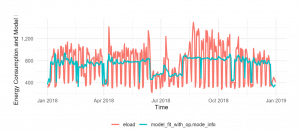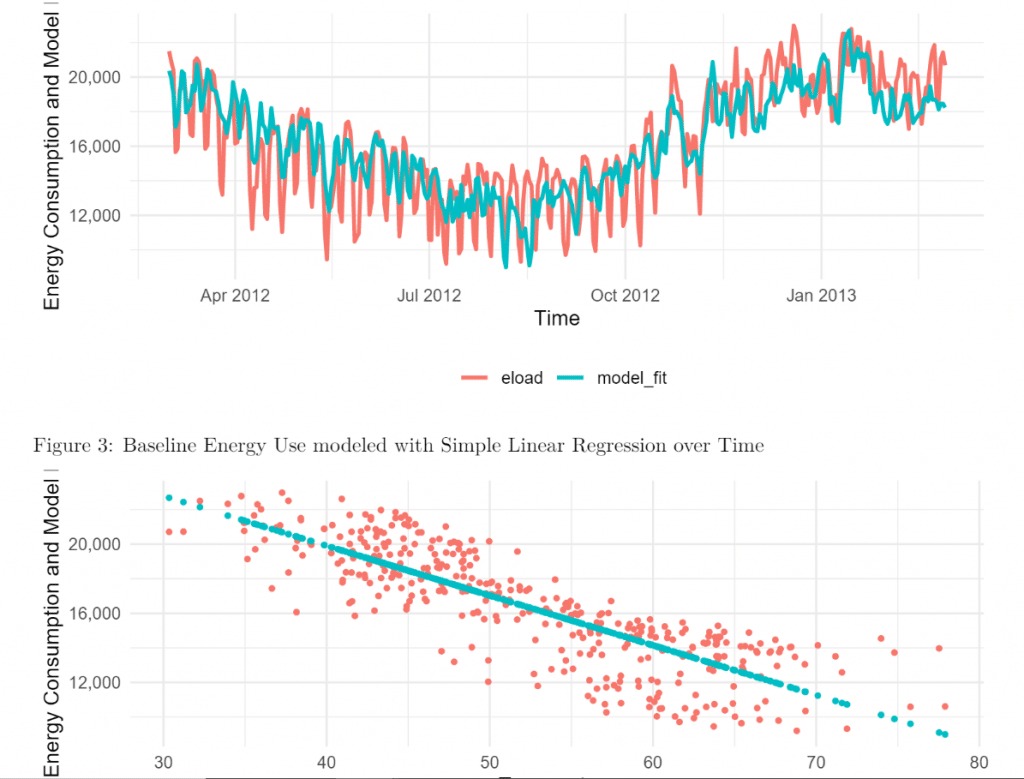We recently released an update to our R package, nmecr, used for NMEC analysis. This version provides a bug fix and vignettes for the R code. is an open-source set of tools for analyzing commercial building energy consumption using a meter-based, whole-building approach for measurement and verification (M&V) of energy efficiency projects. Our goal is to make this type analysis more cost-effective for utility energy efficiency programs using NMEC to verify project energy savings.
NMEC R Code Updates
During our most recent round of testing against the EVO Tool Testing Portal for the time of week and temperature (TOWT) model, we identified a bug. The issue was a contrasts error thrown from the occupancy detection function, nmecr::find_occ_unocc(), when processing buildings with low variation of energy use between occupied and non-occupied periods. Version 1.0.2 includes a code update to catch this error.
Vignettes
We also added vignettes to help users start using the NMEC R code. nmecr now has four vignettes available on github providing an overview of the tool, code examples and results.
Overview
This overview vignette presents a high-level tour of nmecr functions and functionality.

Sample Simple Linear Regression Model from nmecr vignette
Institutional Facilities Energy Savings Analysis
The institutional facility example vignette provides an example using school energy use data and a session schedule. One novel nmecr feature is its expansion of LBNL’s TOWT model which allows the addition of indicator variables that represent operating modes. This is useful when analyzing energy efficiency savings in institutional buildings such as K-12 schools that have very different energy use profiles when school in or out of session. These indicator variables in a school scenario, can represent a school schedule.

Sample Baseline Energy Use Modeled with Simple Linear Regression Model from nmecr vignette
nmecr Predictability
The nmecr predictability vignette provides an example of prescreening buildings. By screening buildings using historical energy usage data, the algorithm determines if a building is a good fit for NMEC M&V analysis. nmecr does this by calculating what level of energy savings would be required to be a good NMEC candidate. This prescreening is done before proceeding down the NMEC path.
Normalized Energy Savings
The normalized energy savings vignette provides a full NMEC example. It contains:
- a full year of building energy use data before and year after an energy efficiency project(s),
- builds baseline and reporting period models,
- uses normalized weather data to calculate normalized energy consumption in the baseline and reporting periods and their difference, i.e. normalized energy savings, and
- demonstrates how to calculate the uncertainty associated with the normalized savings estimate.

Sample Performance Period Energy from nmecr vignette
Future NMEC R Code Updates
Stay tuned for additional documentation and screencasts to help make nmecr easier to install and use. These will include:
- Installation guide and video, for those with no prior R code experience
- Getting started video walkthrough
- Vignette video walkthroughs
- Additional high-level documentation describing options passed to functions
- How-to guide and video on preparing your energy use data for use with nmecr
We are excited to see the activity increase on our GitHub site and are grateful for the support of the Energy Coalition and PG&E who intend to use nmecr in current NMEC energy efficiency programs. If you have any questions about nmecr, suggestions for improvement or would like to share how you are using it, let us know.


